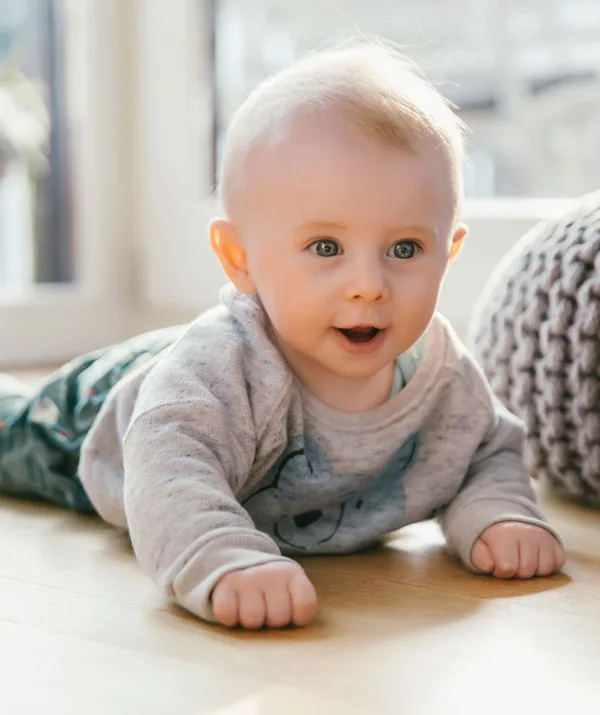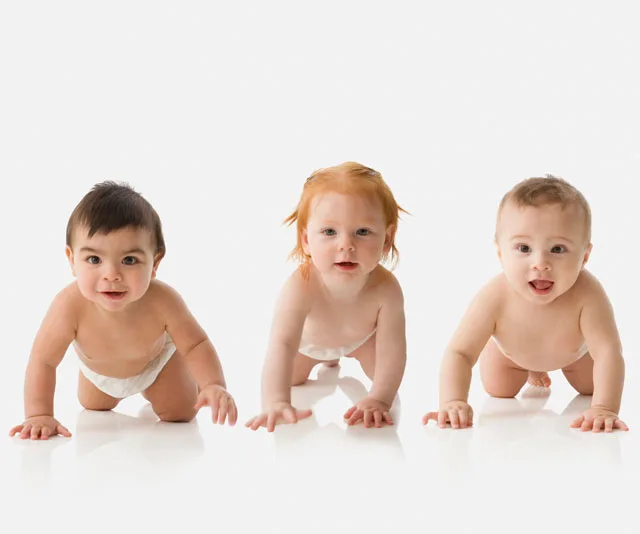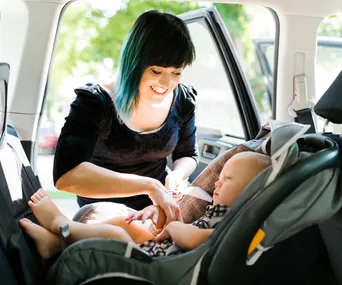When you first set eyes on your newborn, it’s hard to imagine they will soon learn sit, crawl and eventually walk.
Every day your bub will become stronger and more coordinated as he meets his movement milestones.
Continues after video …
Paediatrician Dr Scott Dunlop says a baby’s physical abilities start to develop immediately after birth.
“Gross motor, fine motor, language and even social abilities start to evolve as early as the first six weeks of life,” he says.
Watching your baby learn to move is an amazing time, but it can also be an anxious one.
“Parents often compare and become concerned when their own child is not doing what another is,” says Scott. “But there is a wide variation in when children achieve their milestones and most anxiety is quickly alleviated as skills are achieved.”
Try to remember every baby will find his own way in his own time. The age at which your child sits or crawls is no reflection of his intelligence, and a tendency to acquire skills early or late can even run in the family. However, the majority of children catch up in the end.

Tummy time will help strengthen your baby’s neck and back. (Image: Getty Images.)
Research shows that a baby placed on his front for short periods during waking hours – ‘tummy time’ – will roll, crawl, sit, pull up and walk sooner than a baby who stays on his back.
You can help strengthen your baby’s neck and back in the following ways:
Place him on your chest while you lie semi-reclined or on your back. As your baby gets used to this, you can then move him onto the floor.
Give your baby tummy time each day. Place his hands beside his head and gently turn his head to one side. Stop at any point if you think your baby’s neck is getting tired, and always remember to never leave him unattended on his front.
READ NEXT: 10 Child-friendly dog breeds to know

The age at which your child sits or crawls is no reflection of his intelligence, and a tendency to acquire skills early or late can even run in the family. (Image: Getty)
Around the six to nine month mark, you might also start to notice some pre-crawling movements as your baby pushes himself up off the floor, rocking backwards and forwards on his hands and knees. And he’ll probably swap bouncing on your lap with bended knees for a more ‘tramping’ motion, moving his feet in preparation for walking.
Most babies crawl between seven and 11 months, but not always in the conventional style. “Not all babies crawl, and many that do won’t move in the typical fashion. Initial attempts can be uncoordinated and may see your baby propel himself backwards,” says Scott. “If his arms are stronger than his legs, he might ‘commando crawl’, or he might shuffle on his bottom.”
Although some babies never crawl, it’s a useful skill.
“Crawling helps build strength and stability in the shoulders and hips,” says Scott.
“But remember, if your baby is hitting other motor milestones, such as pulling himself to his knees and then his feet while holding the sofa, the absence of crawling is not necessarily a concern.”

